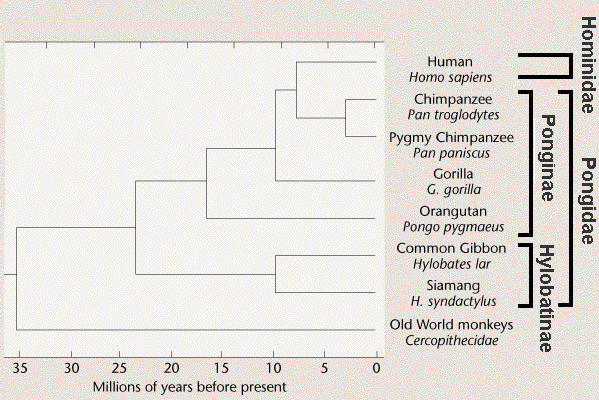
Traditional Classification of Anthropoid primates

Traditional Classification of Anthropoid primates
Traditional
classification is based on recognition of groups of similar
organisms, as indicated by the brackets at right. The
anthropoid ("man-like")
Apes are distinguished from Old World Monkeys by the absence of
a tail. In this group in particular, there is a strong bias that
humans are very distinct and (or) "structurally advanced," and
therefore belong in a separate group (family Hominidae)
apart from the Great Apes (chimps, gorillas, & orangutans)
(subfamily Ponginae). Among the apes, tailless gibbons
and siamangs are perceived as "lesser
apes" that are more "monkey-like,"
and are therefore placed in a separate subfamily Hylobatinae,
within the Ape family (Pongidae). The lesser apes may
also be judged as a distinct, separate family, Hylobatidae.
By "promoting" humans to a
distinct family, this arrangement incorrectly implies that
chimps are more closely related to gorillas than to humans, or
that Lesser and Greater apes are more closely related to each
other than the latter is to humans.